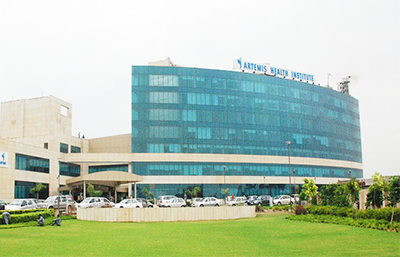Sowa-Rigpa” is considered to be the oldest, living and well documented medical practice & popular in the world. The word‘Sowa Rigpa’ comes from the Bhoti language which stands for ‘Knowledge of Healing’. It is an ancient Indian medical practice that was enriched in the entire Trans-Himalayan region. These days Sowa-Rigpa is more popular in Himalayan societies especially in J & K Region’, Ladakh , Himachal Pradesh (Lahoul & Spiti), West Bengal (Darjeeling), Sikkim and Arunachal Pradesh, and other parts of India. It is also being practiced in countries like Bhutan, Mongolia, and Russia, etc.
Sowa Rigpa is now recognized and promoted as a traditional medical system by the Government of India. With the spread of Buddhism, Sowa-Rigpa also spread to other neighboring countries. It can be perceived to be more close or having similarities with Ayurvedic philosophy/ principles of India since many the texts of Sowa-Rigpa (approximately more than 75%) are taken from one of the most famous treatises of Ayurveda i.e. “Ashtanga Hridya” in one or other form. Many (more than 75%) medicines used in Ayurveda (Indian origin) viz Triphala, Ashok, Ashwagandha, Guggulu, Haridra, etc. are also frequently used in Sowa- Rigpa System of Medicine for treatment purposes.
The principle medical text “rGyud-bZi” Chatush Tantra-a textbook of fundamental principles of Sowa-Rigpa is in the Sanskrit language which was further translated into Bhoti language around 8th – 12th Century and further amended by Yuthok YontanGombo and other scholars of Trans Himalayan region according to the socio-climatic conditions.
TThe fundamental principles of Sowa-Rigpa is based on Jung-wa-nga (Pancha mahabutha),Nespa-sum (Tridosha), Luszung-dun (Sapta dhatu) and do’s and don’ts, Eating habbits, Pulse examination, etc. which are common in Sowa-Rigpa and Ayurveda and clearly indicates its close proximity with India.
Theory and Practice
Sowa-Rigpa is based on the principles of Jung-wa-nga (Skt: panchamahabhutas) and Ngepa-Sum (Skt: Tridosa). Process involve bodies of all the living beings and non-living objects of the universe are composed of Jung-wa-nga; viz Sa, Chu, Me, Lung and Nam-kha (Skt: Prithvi, Jal, Agni, Vayu, and Akash). The physiology, pathology Pharmacology, and metria -medica of this system are established on these theories. Our body is composed of these five Cosmo physical elements of Jung-wa-nga; when the proportion of these elements is an imbalance in our body disorder results. The medicine and diet used for the treatment of disorders are also composed of the same five basic elements. In the body, these elements are present in the form of Ngepa-Sum (Skt: Tri-dosa) Lus-sung-dun (Skt: Sapta Dhatu) and Dri-ma-Sum (Skt: Trimala). In drugs, diet, and drinks they exist in the form of Ro-dug (Skt: Shast-rasa) Nus-pa (Virya) Yontan (Skt: Guna), and Zhu-jes (Skt: Vipaka).
The basic theory of Sowa-Rigpa may be adumbrated in terms of the following five points:
- The body in disease as the locus of treatment
- The antidote, i.e., the treatment
- The method of treatment through antidote;
- Medicine that cures the disease
- Materia Medica, Pharmacy & Pharmacology
Training and Education
Traditionally the sMenpa are trained under the traditional educational system either under private guru-shisya tradition or under gyud-pa (lineage) system in families in which the knowledge is passed down from father to son through generations. It takes several years to become a skillful sMenpa, which requires hard theoretical and practical training. After finishing his/her training the trainee sMenpa has to give an examination in front of the entire community in the presence of a few expert sMenpa in a ceremony to confer the designation of sMenpa on him/her. For higher training, those from the Indian Himalayan region as well used to go to study with reputed scholars or to any of the medical colleges in Tibet in the past. Some of these regions preferred to go to Tibet to begin their education of Sowa-Rigpa.
Given the modern social and educational system, some institutions are imparting the education at par with the modern system in terms of time with packages to be completed within a limited duration. Presently, after 10+2 grate the students are selected on the entrance test merit basis. The nomenclature of this six years course is sMenpa kachupa which is equivalent to Bachelor of Sowa Rigpa (Tibetan Medicine). This course is presently conducted in the following four Institutions in India:
- Central Institute of Buddhist Studies, Leh (under Ministry of Culture, Govt. of India)
- Tibetan Medical and Astrological Institute, Dharamsala HP of his Holiness Dalai Lama
- Central University for Tibetan Studies, Saranath UP (under Ministry of Culture, Govt. of India)
- Chagpori Medical Institute Darjeeling (W.B).








